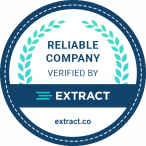Building a SaaS web app from scratch needs a deep understanding of SaaS development and cloud apps. It’s about making software that grows with your business and is easy to use online. To start, learning the basics of SaaS and cloud apps is key. You can find this knowledge in SaaS guides that share important tips and strategies.
SaaS development means creating apps that many users can access. This method saves money, boosts flexibility, and grows with your business. By using cloud apps, companies can focus on what they do best while the software is taken care of by someone else.
Table of Contents
Key Takeaways
- Understanding SaaS development and cloud-based applications is crucial for building a successful SaaS web application.
- SaaS applications are scalable, multi-tenant, and subscription-based.
- Cloud-based applications offer reduced costs, increased flexibility, and improved scalability.
- SaaS development involves designing and building software that can be used by multiple customers.
- Businesses can benefit from SaaS applications by focusing on their core operations while leaving maintenance to the provider.
- SaaS development requires a thorough understanding of the fundamentals of cloud-based applications and software development.
- Resources such as SaaS application guides can provide valuable insights and best practices for building a SaaS web application.
Understanding SaaS Fundamentals
Software as a service (SaaS) has changed how businesses work. It offers a better, cheaper way than old software methods. SaaS is flexible and scalable, helping companies quickly adjust to new market trends.
It also cuts down on initial costs and makes upkeep easier. This makes SaaS appealing to all kinds of businesses.
SaaS makes using software smooth, no matter where you are or what device you use. This is thanks to cloud-based infrastructure and smart web design. So, SaaS apps are great for teams working from different places.
Some big pluses of SaaS are:
- Less money up front
- More room to grow
- Easier upkeep
- Better teamwork and productivity
For web design, SaaS needs a deep grasp of what users want and do. Developers use user-centered design principles to make interfaces that are easy and fun to use. SaaS apps also have to be secure and follow rules, keeping data safe and meeting legal standards.
As SaaS becomes more popular, it’s key for businesses to get what SaaS is all about. By using SaaS and web design, companies can stay ahead and reach their goals in a fast-changing world.
Market Research and Validation Strategies
Doing thorough market research is key to a successful SaaS web app. It means finding out who your audience is, looking at what others do, and seeing if there’s demand. A big part of this is looking at your competitors. This helps you see what they’re good at and what they’re not, and how much of the market they have.
To check if your idea is good, you can try different things. Like asking people in surveys, talking to groups, or making a small version of your product. These ways help you get feedback and make smart choices about your product. Important things to think about include:
- Knowing what your audience needs and wants
- Looking at how your competitors price and what they offer
- Finding out how big the market is and if it’s growing
By doing good market research and validation, you can make sure your SaaS web app is what your audience wants. It’s important for making a successful product and growing over time.
“Market research is the foundation of a successful SaaS web application. It helps you understand your target audience, competitors, and market trends, allowing you to make informed decisions and build a product that meets the needs of your customers.”
| Market Research Method | Description |
|---|---|
| Customer Surveys | Gathering feedback from potential customers to understand their needs and pain points |
| Focus Groups | Conducting group discussions to gather feedback and opinions from potential customers |
| MVP Development | Building a minimum viable product to test and validate your idea |
Essential Technical Requirements for Building a SaaS Web Application from Scratch
Building a SaaS web app from scratch needs careful planning. A scalable architecture is key for handling more users and traffic. This means using load balancing, caching, and optimizing databases.
Using agile development methodologies is also crucial. Scrum and Kanban help teams adapt to changes fast. They ensure the app is built and released quickly, without sacrificing quality.
Technology Stack Selection
Choosing the right tech stack is vital. It involves picking programming languages, frameworks, and databases that support growth and performance. Ruby on Rails, Django, and Node.js are popular choices for SaaS apps.
Infrastructure Requirements
For a SaaS app, you need servers, storage, and networking. Cloud providers like AWS and Azure offer scalable solutions. This lets developers focus on app building, not infrastructure management.
Development Tools and Frameworks
Development tools and frameworks are essential. They help build, test, and deploy apps efficiently. GitHub, Jenkins, and Docker are popular for this. They make development faster and more cost-effective.
Designing Your SaaS Architecture
When designing a SaaS architecture, think about scalability, security, and how easy it is to maintain. A good SaaS architecture should handle lots of users and grow with them. Using microservices is a smart way to make this happen. Microservices let developers split the app into smaller parts that can grow and change on their own.
Service-oriented architecture (SOA) is also key. It focuses on services talking to each other. This makes the architecture more flexible and easy to work with. Event-driven architecture helps with handling events that happen at different times. Containerization with tools like Docker also boosts scalability and upkeep.
Microservices bring many benefits to SaaS architecture, including:
- Improved scalability and flexibility
- Enhanced security and reliability
- Faster development and deployment
By following these principles, you can build a strong, scalable, and easy-to-maintain app. As
experts in the field note, a well-designed SaaS architecture is critical to the success of any SaaS application
. With the right strategy, your SaaS app will meet user needs and help your business grow.
Database Design and Management
Creating a good database is key for a SaaS web app. A well-designed database makes data management efficient. This is vital for a great user experience. When designing a database, you need to think about the type, schema, and how it will grow.
A good database supports the app’s functions and performance. You can pick from relational, NoSQL, or graph databases. Data modeling is also important. It helps define data structure and how it relates to other data.
To manage data well, consider scaling. This includes dividing data horizontally or vertically and replicating it. These methods boost performance and availability. Following best practices in database design and management leads to a strong, scalable SaaS web app.
- Choose the right database type
- Plan the data schema carefully
- Consider scaling factors
Investing in database design and management lays a solid base for your SaaS web app. It ensures efficient data management and a great user experience.
User Authentication and Authorization Systems
It’s key to have strong user authentication and authorization systems for your SaaS web app. These systems check who you are and what you can do in the app. User authentication checks your identity, and authorization decides what actions you can take.
For your SaaS app’s security, look into OAuth, OpenID Connect, and SAML. These methods make it easier to work with other services. Important steps include:
- Password hashing and salting to protect user passwords
- Encryption to secure data in transit and at rest
- Multi-factor authentication to add an extra layer of security
- Role-based access control to restrict access to sensitive features and data
A good authentication and authorization system stops unauthorized access and data breaches. This builds trust with your users and boosts your reputation.
| Authentication Protocol | Description |
|---|---|
| OAuth | An open-standard authorization framework that provides secure access to protected resources |
| OpenID Connect | A simple identity layer on top of the OAuth 2.0 protocol, providing authentication and authorization capabilities |
| SAML | A standard for exchanging authentication and authorization data between systems, enabling single sign-on capabilities |
Implementing Multi-tenancy Architecture
When making a SaaS app, using a multi-tenancy setup is key. It cuts costs, grows with your business, and makes upkeep easier. This way, many users can use the same app, but their data stays private. Tenant isolation is vital to keep each user’s info safe from others.
To keep data safe, developers use several methods. These include:
- Data encryption
- Access control mechanisms
- Network segmentation
These methods stop unauthorized data access. They make sure each user’s data is handled right.
Data partitioning is also crucial in multi-tenancy. It breaks down data into smaller parts. This makes it easier to manage and access. Using these methods boosts app performance and growth.
Building a multi-tenancy setup needs careful planning. You must think about security, growth, and how well it works. With the right strategies, developers can build a safe and efficient system for their users.
| Multi-tenancy Benefits | Description |
|---|---|
| Reduced costs | Shared resources and infrastructure reduce costs for tenants |
| Increased scalability | Multi-tenancy allows for easy scaling to meet growing demand |
| Improved maintainability | Centralized management and updates simplify maintenance |
Building the Frontend Interface
Frontend development is key in making a SaaS web app user-friendly and responsive. A good frontend interface is crucial for a smooth user experience. It’s important to focus on user interface design, making sure the layout is easy to use.
When designing a frontend interface, consider these points:
- Make it responsive for all screen sizes and devices
- Use a consistent design language
- Ensure it’s accessible and usable for everyone
Use modern frameworks like React, Angular, and Vue.js for your frontend. These frameworks help build scalable and maintainable code.
Investing in a well-designed frontend interface is vital. It makes your SaaS web app user-friendly and sets your business up for success. Focus on user interface and frontend development best practices for an exceptional interface.
Subscription Management and Billing Integration
Effective subscription management and billing integration are key for a successful SaaS web app. A good subscription system helps businesses manage their money better and keeps customers happy. This leads to more loyal customers and less people leaving.
Choosing the right payment gateway is important for billing. Options like Stripe, PayPal, and Authorize.net offer secure payment processing and flexible pricing plans. The right choice ensures a smooth billing experience for customers.
Key things to think about for subscription management and billing include:
- Payment gateway selection
- Subscription models design
- Payment processing implementation
A well-made subscription system gives businesses steady income and happy customers. Billing integration automates payments, cuts down on mistakes, and makes the customer experience better. So, subscription management and billing are vital for a SaaS web app’s success.
By focusing on subscription management and billing, businesses can build a strong base for their SaaS app. The right payment gateway and subscription model help optimize income, improve customer happiness, and keep ahead in the SaaS market.
| Payment Gateway | Features | Pricing |
|---|---|---|
| Stripe | Secure payment processing, flexible pricing plans | 2.9% + 30¢ per transaction |
| PayPal | Easy integration, competitive pricing | 2.9% + 30¢ per transaction |
| Authorize.net | Reliable payment processing, advanced security features | 2.9% + 30¢ per transaction |
Security Best Practices and Compliance
Keeping your SaaS web application secure and compliant is key. It protects your customers’ data and keeps trust high. Use security best practices like data encryption, access controls, and managing vulnerabilities. These steps help stop data breaches and cyber attacks.
To meet compliance needs, look into frameworks like GDPR, HIPAA, and PCI-DSS. These offer rules for safe data handling and customer info protection. By sticking to these rules, your SaaS app will meet security and compliance standards.
Important security best practices include:
- Regularly update and patch software and systems
- Use strong access controls and authentication
- Protect sensitive data with encryption
- Do regular security audits and vulnerability checks
Focus on security and compliance to gain customer trust and protect your business.
| Compliance Framework | Description |
|---|---|
| GDPR | General Data Protection Regulation, a European Union regulation for data protection |
| HIPAA | Health Insurance Portability and Accountability Act, a US regulation for protecting sensitive health information |
| PCI-DSS | Payment Card Industry Data Security Standard, a global standard for securing payment card information |
Performance Optimization Strategies
Improving a SaaS web app’s performance is key for a smooth user experience. Caching is a big help here, cutting down on wait times and boosting speed. It makes the app run much better.
Load balancing is also vital. It makes sure no server gets too many requests at once. This is done with both hardware and software tools. Plus, making databases work better is crucial for faster queries and less database stress.
Some top ways to boost performance include:
- Using caching tools like Redis or Memcached
- Setting up load balancing with HAProxy or NGINX
- Optimizing database queries and indexing
By using these methods, developers can make their SaaS apps run faster. This means happier users and a more scalable app.
| Strategy | Description |
|---|---|
| Caching | Reduces latency and improves throughput by storing frequently accessed data in memory |
| Load Balancing | Distributes incoming traffic across multiple servers to prevent overload and improve responsiveness |
| Database Optimization | Improves query performance and reduces load on the database through indexing, caching, and query optimization |
Analytics and Monitoring Setup
Setting up analytics and monitoring is key to understanding how users interact with your site. It helps track important metrics and spot areas for betterment. This process includes picking the right tools, setting up data collection, and making dashboards and reports.
Some important things to think about for analytics and monitoring are:
- Choosing the right analytics platform, such as Google Analytics
- Configuring data collection to track key metrics, such as page views and user engagement
- Creating dashboards and reports to visualize data and identify trends
By setting up analytics and monitoring, businesses can get deep insights into user behavior. This helps make informed decisions to enhance their SaaS web application.
Good monitoring also helps find and fix issues fast. This cuts down on downtime and boosts user experience. By combining analytics and monitoring in their SaaS web application, businesses can work better, engage users more, and grow.
Testing and Quality Assurance
Ensuring the quality and reliability of a SaaS web application is key. It keeps customer trust high and support costs low. Testing is crucial in the development process. It helps find and fix problems, making the user experience better.
By using quality assurance strategies, developers can ensure their app meets standards.
A good testing plan includes different methods:
- Unit testing: checks individual parts of the app
- Integration testing: sees how parts work together
- Performance testing: checks the app’s speed and how it scales
Automated testing helps developers save time and find more problems. This makes the app better, which makes customers happier and saves money on upkeep.
In short, a detailed testing and quality assurance process is vital. It makes sure the SaaS web application is reliable and of high quality. This builds customer trust and loyalty.
Deployment and DevOps Practices
Deploying and keeping a SaaS web app running smoothly requires careful thought. You need to think about deployment strategies, managing the infrastructure, and keeping an eye on things. Using DevOps practices helps teams work better together, be more efficient, and have less downtime.
Some important practices include:
- Continuous integration
- Continuous deployment
- Continuous monitoring
These methods help teams work together smoothly. They make it easier to keep the app running well. This leads to happier users and a better experience for everyone.
Good deployment and DevOps practices are key to a SaaS app’s success. They make sure the app is always up and running well. This means happier customers, lower costs, and more money coming in.
In short, deployment and DevOps practices are crucial for a SaaS app’s success. They ensure the app is always ready to go, scalable, and safe. This leads to happier customers and more money for the business.
| Practice | Benefits |
|---|---|
| Continuous Integration | Improved collaboration, increased efficiency |
| Continuous Deployment | Reduced downtime, improved user experience |
| Continuous Monitoring | Improved security, reduced costs |
Conclusion
Building a SaaS web app from scratch needs careful thought. You must consider market research, technical needs, and how to deploy it. As we look to the future of SaaS, new trends and tech will shape the industry. Understanding the market’s complexities and opportunities is key.
In the future, cloud-based services will grow, driving innovation and growth. As SaaS demand rises, staying updated with the latest in the field is crucial. This way, businesses and developers can seize new chances and build successful SaaS apps that meet user needs.
The success in SaaS depends on grasping the market’s details, staying ahead, and adapting to new trends and tech. As the SaaS world keeps changing, one thing is clear. The future of SaaS is bright for those ready to innovate and succeed in this fast-paced environment.



















